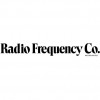
Founded in 1946, Radio Frequency Company's 40,000 square foot design and manufacturing facility is located in the suburbs of Boston Massachusetts alongside of the historic Charles River. RFC is the world's leading manufacturer of advanced industrial RF processing systems for the rapid heating, drying, curing, disinfestation and pasteurization of food products and industrial materials.
Services
Founded in 1946, RFC is a closely held and financially stable private corporation.
Located on a 19 acre site, its facilities include a 40,000 square foot plant and an RF test range used to verify that its equipment operates within U. S., FCC, CE and world-wide RF emission standards.
The RFC Macrowave Systems Division is a single source for standard and fully automated RF heating and drying systems.
Under one roof, the company designs and builds RF generators, applicators, automated handling systems, system instrumentation packages, and programmable logic control systems.
Located on a 19 acre site, its facilities include a 40,000 square foot plant and an RF test range used to verify that its equipment operates within U. S., FCC, CE and world-wide RF emission standards.
The RFC Macrowave Systems Division is a single source for standard and fully automated RF heating and drying systems.
Under one roof, the company designs and builds RF generators, applicators, automated handling systems, system instrumentation packages, and programmable logic control systems.
Radio Frequency Heating Provides a Validated Kill-Step in the Production of Baked Goods By: Timothy D. Clark, President & CEO, Radio Frequency Company, Inc.
For over 60 years, Radio Frequency (RF) post-baking dryers have been utilized on cracker and snack food production lines to increase productivity and.
Radio Frequency (RF) pasteurization of cereal grains provides a 5 log reduction (CFUs) of aspergillus molds and stops their production of dangerous aflatoxins.
Aflatoxins are poisonous carcinogens and mutagens produced by both {aspergillus flavus} and {aspergillus parasiticus, } which are common forms of 'weedy' molds widespread in.
For over 60 years, Radio Frequency (RF) post-baking dryers have been utilized on cracker and snack food production lines to increase productivity and.
Radio Frequency (RF) pasteurization of cereal grains provides a 5 log reduction (CFUs) of aspergillus molds and stops their production of dangerous aflatoxins.
Aflatoxins are poisonous carcinogens and mutagens produced by both {aspergillus flavus} and {aspergillus parasiticus, } which are common forms of 'weedy' molds widespread in.
Radio Frequency Company views the sale of its Macrowave Systems as an opportunity to partner with our customers to ensure the maximum return on investment is achieved with each Macrowave System installation.
Our experience has proved that comprehensive preventive maintenance and periodic refresher training for operators and maintenance personnel are critical to achieving this goal.
The principals of radio frequency heating and drying offer many advantages over conventional technologies.
The unique design of the RFC Macrowave System has led to improvements in production processes in terms of product quality and throughput.
Our experience has proved that comprehensive preventive maintenance and periodic refresher training for operators and maintenance personnel are critical to achieving this goal.
The principals of radio frequency heating and drying offer many advantages over conventional technologies.
The unique design of the RFC Macrowave System has led to improvements in production processes in terms of product quality and throughput.
In your search for improved process heating methods, you may have experienced promising test results using a home or lab size microwave oven.
However, as you proceed to scale up, it will be helpful to recognize some important differences between microwave and RF equipment.
Most industrial process heating applications, originally thought as being microwave applications, are found to be more ideally suited to lower frequency RF equipment such as RFC's Macrowave systems.
There are numerous cases where microwave dryers in industrial production have been replaced by RF dryers for these fundamental reasons.
However, as you proceed to scale up, it will be helpful to recognize some important differences between microwave and RF equipment.
Most industrial process heating applications, originally thought as being microwave applications, are found to be more ideally suited to lower frequency RF equipment such as RFC's Macrowave systems.
There are numerous cases where microwave dryers in industrial production have been replaced by RF dryers for these fundamental reasons.
Since the early 1960s Radio Frequency Company has been marketing its Macrowave heating systems for the pasteurization and disinfestation of food products.
Pictured below is a 30kW Macrowave Pasteurization System for granular food products such as green peanuts and various types of grain, which was designed and patented by RFC's founder, Mr. Joshua G.D. Manwaring on July fourth 1967.
Joshua's design featured a rotary product feeding tube to prevent agglomeration, and a closed loop temperature control system, which were both considered cutting-edge technology at that time.
Pictured below is a 30kW Macrowave Pasteurization System for granular food products such as green peanuts and various types of grain, which was designed and patented by RFC's founder, Mr. Joshua G.D. Manwaring on July fourth 1967.
Joshua's design featured a rotary product feeding tube to prevent agglomeration, and a closed loop temperature control system, which were both considered cutting-edge technology at that time.
Reviews

Be the first to review La Rose RF Systems.
Write a Review